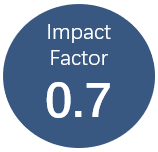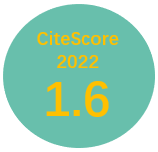Intangible investment in the EU and US before and since the Great Recession and its contribution to productivity growth
Vol 2, Issue 1, 2018
VIEWS - 2285 (Abstract) 1423 (PDF)
Abstract
This paper uses a new cross-country cross-industry dataset on investment in tangible and intangible assets for 18 European countries and the US. We set out a framework for measuring intangible investment and capital stocks and their effect on output, inputs and total factor productivity. The analysis provides evidence on the diffusion of intangible investment across Europe and the US over the years 2000-2013 and offers growth accounting evidence before and after the Great Recession in 2008-2009. Our major findings are the following. First, tangible investment fell massively during the Great Recession and has hardly recovered, whereas intangible investment has been relatively resilient and recovered fast in the US but lagged behind in the EU. Second, the sources of growth analysis including only national account intangibles (software, R&D, mineral exploration and artistic originals), suggest that capital deepening is the main driver of growth, with tangibles and intangibles accounting for 80% and 20% in the EU while both account for 50% in the US, over 2000-2013. Extending the asset boundary to the intangible assets not included in the national accounts (Corrado, Hulten and Sichel (2005)) makes capital deepening increase. The contribution of tangibles is reduced both in the EU and the US (60% and 40% respectively) while intangibles account for a larger share (40% in EU and 60% in the US). Then, our analysis shows that since the Great Recession, the slowdown in labour productivity growth has been driven by a decline in TFP growth with relatively a minor role for tangible and intangible capital. Finally, we document a significant correlation between stricter employment protection rules and less government investment in R&D, and a lower ratio of intangible to tangible investment.
Keywords
Full Text:
PDFReferences
Aghion P, Bertola G, Hellwig M, et al. (2003). An agenda for a growing Europe: The Sapir Report. Oxford, UK: Oxford University Press. doi: 10.1093/0199271488.001.0001.
Aghion P and Griffith R (2005). Competition and growth: Reconciling theory and evidence. Cambridge, MA, USA: MIT Press.
Aghion P and Howitt P (1992). “A model of growth through creative destruction”. Econometrica, 60(2): 323–351. doi: 10.2307/2951599.
Alesina A, Ardagna S, Nicoletti G, et al. (2005). “Regulation and investment”. Journal of the European Economic Association, 3(4): 791−825. doi: 10.1162/1542476054430834.
Arrighetti A, Landini F and Lasagni A (2014). “Intangible assets and firm heterogeneity: Evidence from Italy”. Research Policy, 43(1): 202–213. doi: 10.1016/j.respol.2013.07.015.
Awano G, Franklin M, Haskel J, et al. (2010). “Investing in innovation: Findings from the UK Investment in Intangible Assets Survey”. NESTA Index Report (July). London, UK: NESTA.
Bartelsman EJ, Gautier PA and de Wind J (2011). “Employment protection, technology choice, and worker allocation”. IZA Discussion Paper No. 4895. Bonn, Germany: Institute for the Study of Labor (IZA).
Bassanini A, Nunziata L and Venn D (2009). “Job protection legislation and productivity growth in OECD countries”. Economic Policy, 24(58): 349–402. doi: 10.1111/j.1468-0327.2009.00221.x.
Ciriaci D, Grassano N and Vezzani A (2016). “Regulation, red tape and location choices of top R&D investors”. IPTS Working Papers on Corporate R&D and Innovation No. 01/2016. Geel, Belgium: European Commission, Joint Research Centre.
Corrado C, Haskel J and Jona-Lasinio C (2017). “Knowledge spillovers, ICT and productivity growth”. Oxford Bulletin of Economics and Statistics, 79(4): 592–618. doi: 10.1111/obes.12171.
Corrado C, Haskel J, Jona-Lasinio C, et al. (2012). “Intangible capital and growth in advanced economies: Measurement methods and comparative results”. IZA Discussion Paper No. 6733. Bonn, Germany: IZA.
_______ (2013). “Innovation and intangible investment in Europe, Japan and the United States”. Oxford Review of Economic Policy, 29(2): 261–286. doi: 10.1093/oxrep/grt017.
Corrado C, Hulten C and Sichel D (2005). “Measuring capital and technology: An expanded framework”. In: Corrado C, Haltiwanger J and Sichel D (eds.). Measuring capital in the new economy. Chicago, IL, USA: The University of Chicago Press. doi: 10.7208/chicago/9780226116174.003.0002.
___ (2009). “Intangible capital and US economic growth”. The Review of Income and Wealth, 55(3): 661–685. doi: 10.1111/j.1475-4991.2009.00343.x.
Corrado C, Goodridge P and Haskel J (2011). “Constructing a price deflator for R&D: Calculating the price of knowledge investments as a residual”. Economics Program Working Paper EPWP #11-03. New York, NY, USA: The Conference Board. doi: 10.2139/ssrn.2117802.
Dierickx I and Cool K (1989). “Asset stock accumulation and sustainability of competitive advantage”. Management Science, 35(12): 1504–1511. doi: 10.1287/mnsc.35.12.1504.
European Commission (2013). “Investing in intangibles: Economic assets and innovation drivers for growth”. Flash Eurobarometer No. 369. Brussels, Belgium: European Commission, Directorate-General for Enterprise and Industry.
Eurostat (2012). Europe in figures: Eurostat yearbook 2012. Luxembourg: Eurostat.
Ghosal V and Loungani P (2000). “The differential impact of uncertainty on investment in small and large businesses”. Review of Economics and Statistics, 82(2): 338–343. doi: 10.1162/003465300558722.
Grossman GM and Helpman E (1991). “Quality ladders in the theory of growth”. The Review of Economic Studies, 58(1): 43–61. doi: 10.2307/2298044.
Grout PA (1984). “Investment and wages in the absence of binding contracts: A Nash bargaining approach”. Econometrica, 52(2): 449–460. doi: 10.2307/1911498.
Hulten CR (1979). “On the ‘importance’ of productivity change”. The American Economic Review, 69(1): 126–136.
Nakamura L (1999). “Intangibles: What put the new in the new economy?” Business Review, July/August: 3–16.
________ (2001). “What is the US gross investment in intangibles? (At least) One trillion dollars a year!” Working Paper No. 01-15. Philadelphia, PA, USA: Federal Reserve Bank of Philadelphia.
Romer PM (1990). “Endogenous technological change”. Journal of Political Economy, 98(5 Part 2): S71–S102. doi: 10.3386/w3210.
Schiantarelli F (2016). “Do product market reforms stimulate employment, investment, and innovation?” IZA World of Labor, 2016: 266. doi: 10.15185/izawol.266.
Schivardi F and Viviano E (2011). “Entry barriers in retail trade”. The Economic Journal, 121(551): 145−170. doi: 10.1111/j.1468-0297.2009.02348.x.
Weitzman ML (1976). “On the welfare significance of national product in a dynamic economy”. The Quarterly Journal of Economics, 90(1): 156–162. doi: 10.2307/1886092.
DOI: https://doi.org/10.24294/jipd.v2i1.205
Refbacks
- There are currently no refbacks.
Copyright (c) 2018 Carol Corrado, Jonathan Haskel, Cecilia Jona-Lasinio, Massimiliano Iommi

This work is licensed under a Creative Commons Attribution-NonCommercial 4.0 International License.

This site is licensed under a Creative Commons Attribution 4.0 International License.










